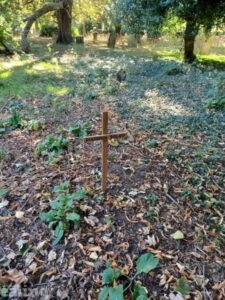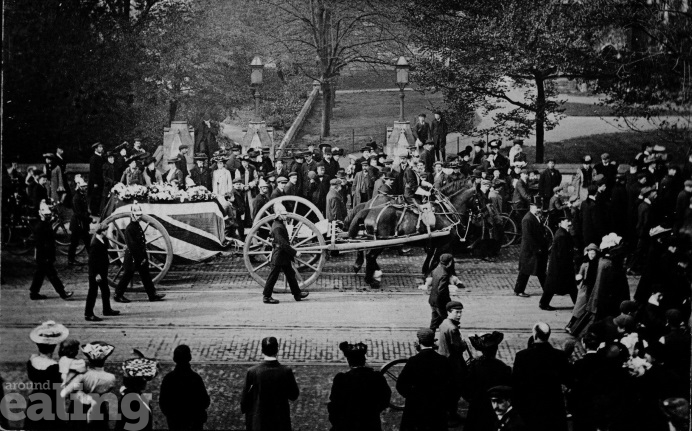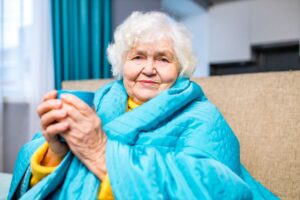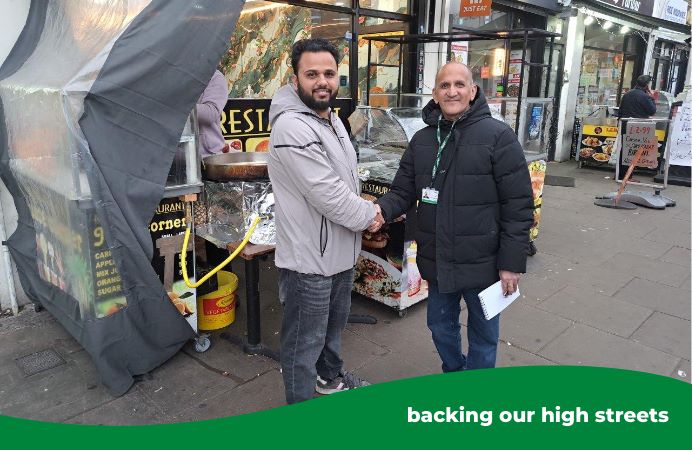A decorated war hero, who took part in the infamous ‘charge of the Light Brigade’, was commemorated recently.
While South Ealing Cemetery was being announced as a public park recently, Ealing Council representatives found the spot thought to be the unmarked grave used for the final resting place of Benjamin Soley. A wooden cross with his name was placed there.
With thanks to borough archivist Dr Jonathan Oates, we have found out more about Soley, whose death was marked by local publicity and whose funeral included the playing of regimental music.
Soley would eventually work for Ealing Council but, before that, he had a distinguished 13-year military career.
He was born on 17 April 1833 and was baptised at St Mary’s church, West Twyford, on 12 May 1833.
His father was also called Benjamin and was a labourer. His mother was Harriett and there were at least 6 children in the family. In 1851 Benjamin was a labourer, aged 18 and lived with his family at 3 Caroline Place, Ealing. He appears to have wanted to seek a more exciting life because he soon left.

Into the ‘valley of Death’
In 1852 Soley enlisted as a private in the 17th regiment of Lancers when the recruiting depot was at Mount Avenue, Ealing.
It was one of the 5 regiments of light cavalry which took part in the ‘charge of the Light brigade’ at the Battle of Balaclava on 25 October 1854 during the Crimean War. The brave, but potentially suicidal, assault, was feted and celebrated by artists and writers alike – including in the famous poem by the same name by Alfred Lord Tennyson which included the well-known lines ‘Into the valley of Death, Rode the six hundred’.
Despite heavy casualties, the troops reached the Russian guns, scattered the gunners but were then forced to retreat. Soley was noted as being severely wounded in the battle.
In 1954, on the centenary of the famous battle, Soley was recalled in the local press by some of his grandchildren who still lived in Ealing.
As a career soldier, he faced many battles during his lifetime and further injury.
He was awarded the Crimea Medal with clasps for the battles of Alma and Inkerman, 2 less well-known conflicts in which the allies defeated the Russians. He also saw active service in India, at the siege of Dehli in 1857 and in the Turkish campaign. At some point he sustained a rifle bullet wound.
Back home in Ealing
By 1865 Soley was back in Ealing and ended his military service. He was employed a labourer once more. There he married on 26 November at Christ Church one Matilda Nicholls, a servant aged 25 and born in Southall. They were living in Battersea in 1871 where their first known son was born. By 1874 they were back in Ealing (in 1875 he may have attended the survivors’ reunion at Alexandra Palace and other reunions) and had another 4 children. They lived at 4 Brentside Cottages in 1881 and, from at least 1891 onwards, they lived at 19 Castlebar Mews.

By at least 1892 (possibly 1882) Soley was employed by Ealing Council as a roadman. At the marriage of one of his daughters he was listed as ‘late private 17th Lancers’. His military renown was known locally as evidenced by local newspaper reports referring to him as a ‘Balaclava hero’ and as a ‘Crimean veteran’. In 1894 he tried to apply for a war pension but was unsuccessful as evidence was unclear and he failed to answer the necessary questions.
Soley died on 17 April 1906, aged 73, and was buried at South Ealing Cemetery on 24 April. It was given a great deal of publicity in the local press as well as a few other newspapers throughout the country. The band of his old regiment played the music as the cortege left his last home, 50 Carlyle Road, to St Stephen’s Church, where he had been a regular worshipper. You can see a photo of the cortege at the top of this article.
The vicar reminded the younger people of Soley’s heroism and that they might need to do likewise in the future should the need arose. Many people lined the funeral route and went to the cemetery for the burial. Ealing firemen carried the coffin, draped in a union flag. The mayor made a speech and there was another elderly Crimean veteran there too. Soley is buried in an unmarked grave.





